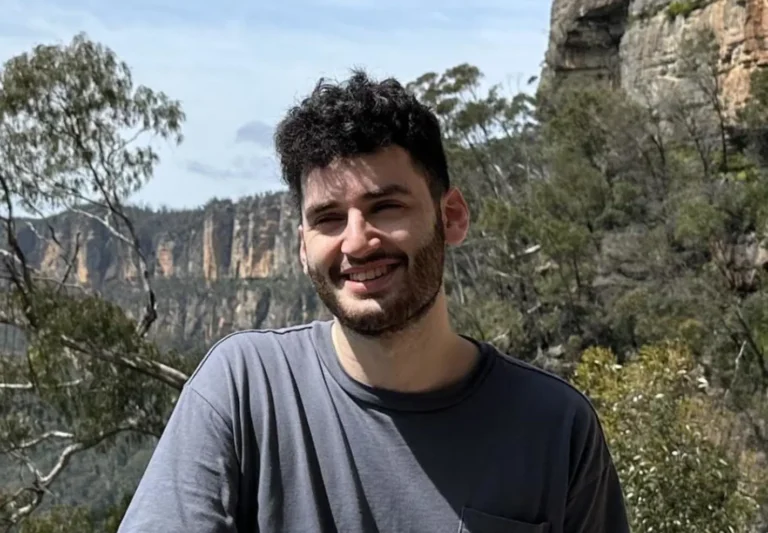
Koalas locked-in so developers can roam
By MERRILL WITT
The year-long Upper House Inquiry into Koala populations and habitat in NSW released a report in July that contained an alarming revelation. Predictions that the Koala is on track to become functionally extinct in NSW by 2050 are, in fact, far too optimistic because “the scale of loss as a result of the fires to many significant local populations” hadn’t been factored into the modelling.
In response to this dire warning, the NSW Energy and Environment Minister, Matt Kean, announced a goal to double NSW’s koala population in the wild by 2050.
It’s a worthwhile aspirational target, but recent developments suggest that it doesn’t take into account the dominance of competing Government objectives, like increasing housing supply and employment, which will likely make even stabilising the existing koala population a huge challenge.
Consider for a moment what’s happening in Sydney. Government plans are currently being finalised for the biodiversity certification of a new urban growth corridor that stretches from Camden through Menangle and Campbelltown to Appin and Wilton. Over the next 20 years, 58,000 new dwellings will be added to an area that is “home to the largest koala population in the Sydney Basin with 600-1000 koalas,” according to the Government’s just-released draft Cumberland Plain Conservation Plan (Plan).
Cumberland Plain is already very fragile
The Plan also explains that in addition to supporting the state’s largest chlamydia-free koala population, the Cumberland Plain is home to “species and ecological communities that are unique to the subregion.”
But this wondrous ecosystem is in bad shape. The Australian Department of Environment’s website states that of the original 107,000 hectares of Cumberland Plain Woodland, a critically endangered ecological community that is found only in the Sydney Basin, only 6,400 hectares or 6% remains.
In fact, the federal government is so concerned about the extent of environmental degradation on the Cumberland Plain that when it certified a Biodiversity Offset Program for two other massive greenfield developments – the North West and South West Sydney Growth Centres – in 2012, it designated the Cumberland Plain as a “first priority” biodiversity offset area.
Biodiversity certification will facilitate land-release
Once the Plan receives biodiversity certification development can proceed without the usual requirement for site-by-site assessment of biodiversity impacts.
According to the Growth Centres Biodiversity Offset Program’s most recent annual report, this landscape-scale approach to offsetting “supports a more streamlined and cost-effective land-release program” while enabling “the NSW Government to be strategic in meeting its goals for biodiversity conservation.”
But the failure of biodiversity offset agreements, in general, to live up to their promised environmental outcomes was recently highlighted by Professor Graeme Samuel AC’s Interim Report on the 10-year statutory Review of the Environmental Protection Biodiversity Conservation Act (EPBC Act). It depressingly concluded that “offsets do not offset the impact of development, and overall there is a net loss of habitat.”
The Interim Report also found that “it is generally not clear if the area set aside for the offset is at risk from future development;” an observation that seems particularly relevant with respect to the Cumberland Plain because it has already been designated as a “first priority” biodiversity offset area for other growth centres within or near its boundaries.
Chief Scientist asked to provide advice on how to protect koalas
Late last year, the Government responded to growing public concern about the future of the South West Sydney koalas by asking the NSW Chief Scientist to appoint an expert panel to provide advice on effective methods to mitigate the impact of the proposed new urban development on koala habitat in the Campbelltown area and to specifically look at “the benefit of maintaining east-west connectivity between the Georges River and Nepean River.”
Its recently released report, Advice on the protection of the Campbelltown Koala population (Chief Scientist Koala Report), doesn’t exactly read like a ringing endorsement for further urbanisation in the area.
The executive summary observes that “few dense urban new developments in Australia have successfully, over the long term, avoided declining koala populations in the context of rapid growth in urban infrastructure, dwellings, and the threats that arise from thousands of human residents.”
Nevertheless, the Panel recommends four pathways to try to deal with the impacts of development on the koalas, two of which it believes could actually secure or even increase the area’s koala population if successfully implemented.
It also identifies the risks associated with each of these pathways but, strangely enough, fails to identify the biggest risk of all. That is, the likelihood that the Government would not incorporate all of its recommendations for habitat protection into the Plan.
Recommended east-west Koala movement corridors are not incorporated into Plan
The lack of real action to date on protecting the South West Sydney koalas meant that a recent ministerial announcement of measures to conserve and enhance koala habitat was initially welcomed by environment groups and the local community.
The devil, as they say, is in the details. On the plus side, the Plan includes a commitment for the creation over time of a 1,885 hectare Georges River Koala Reserve, which will protect prime habitat and secure the koalas’ important north-south koala movement corridor between Kentlyn and Appin. Funding of $84 million will be set aside to install 120 kilometres of koala fencing and to plant 100,000 new feed trees.
But the Draft Cumberland Plain Assessment Report, prepared for the Government by private consultancy Biosis, reveals that 26% of mapped koala habitat will be impacted by the development proposed in the Plan and 260 hectares of important koala habitat will need to be offset through the biodiversity offset program.
Unfortunately, the Plan also downplays the Chief Scientist Koala Report’s advice about the importance of “maintaining connectivity of habitat” to “help avoid the creation of dead ends where koalas face threats without routes of escape.”
While it mentions that “east-west connectivity between the Georges and Nepean rivers is important for the resilience of the Southern Sydney koala population,” the Plan chooses to rely on “scientific advice from the department and the research community,” which claims that the “existing six east-west corridors in the Greater Macarthur Growth Area are too fragmented” and “not wide enough to support the Chief Scientist Koala Report recommendation for a width of 390–420 metres for a safe koala corridor.”
Consequently, only one of the six east-west corridors recommended for protection – the east-west Ousedale Creek to Appin North corridor – will be maintained.
It’s a curious choice because, according to the Chief Scientist Koala Report, access to the corridor is impeded by “numerous suburban and rural properties between the habitat edge and road surface, on both the east and west sides of Appin Road.”
“Land use” and “land tenure” issues are also cited in the Plan as reasons for why more east-west corridors can’t be protected, which seems to be an elliptical way of saying that most of the rural land on the western side of Appin Road between Mount Gilead and Appin North has been reclassified in the Plan as “urban capable”?
Controversial developments already approved on koala habitat
Most worryingly for the koalas is the lack of inclusion of an east-west movement corridor on or near the historic Mount Gilead property just south of Campbelltown.
Property developer Lendlease has already received federal government biodiversity certification for Stage 1 of a new housing development that will be built over the koalas’ fastest and easiest route between the Georges and Nepean rivers.
The Chief Scientist Koala Report explains how “the importance of the Mount Gilead site to the east-west movement of koalas is amplified by its location at the north end of the Nepean corridor.”
It notes that “koalas currently can move through the landscape in an easterly direction towards the Georges River,” but “once housing development occurs along the western flank of site,” which will happen if the current plans for Stage 2 are approved, “the route for koalas to move east or west will be through a narrow strip of habitat at the confluence of the Nepean River and Menangle Creek.”
Last Thursday, the Total Environment Centre’s Urban Campaigner Saul Deane reiterated the advice of the Chief Scientist’s Koala Report. He told Wendy Harmer, co-host of ABC Radio Sydney’s Breakfast, that “underpasses across Appin Road and at least one 450 metres wide east-west movement corridor in or adjacent to Mount Gilead are essential for ensuring that this uniquely chlamydia-free population can continue to expand and cross-breed with other colonies.”
Fortunately, biodiversity certification for Stage 2 of the Mount Gilead development is still pending. And last Friday, the Environment Minister put Lendlease on notice during his announcement of a state heritage listing for Mount Gilead’s colonial buildings and 150 hectares of curtilage.
“The corridors need to be 300 and 450 metres in width,” Mr Kean told the ABC. “That may encroach on some of the land that Lendlease has purchased, but my priority is to look out for my environment and that’s exactly what I’ll be doing,” he said.
Reversing the decision to reclassify rural properties just south of Gilead as “urban capable” in the Plan would also help to free up more land at this vital location for a koala movement corridor of the recommended width.
Koalas are the “most iconic example of the mismanagement of our environment”
The Environment Minister volunteered a candid description of past government mistakes to protect the Koala when he announced his commitment to double their numbers in NSW by 2050: “Koalas are the most iconic example of our mismanagement of the environment and we’ve got to say ‘enough is enough,’” he told the press.
Implementing all of the recommendations for koala protection in the Chief Scientist Koala Report offers Mr Kean a good chance to break the pattern of government mismanagement of our country’s most beloved icon.
Abandoning the new urban growth corridor altogether would offer both the koalas and the precious remaining ecosystem of the Cumberland Plain an even better chance of long-term survival!
.









